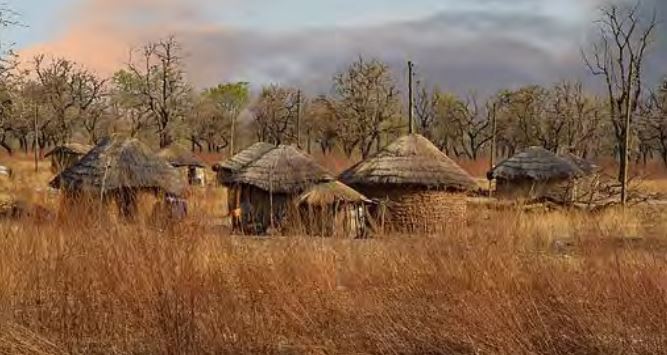RosCan advances on Mali gold discovery

A village in Mali, West Africa. Source: RosCan Gold Corp.

RosCan Gold Corp. [ROS-TSXV] on Thursday January 24 announced positive assay results from an initial air core drilling program at its Kandiole Project in Mali, West Africa.
The drilling program was completed in December 2018, and was designed to test strong gold anomalies in termite mounds with coincident gold-in-soil gold anomalies.
The company said significant amounts of saprolite-hosted gold mineralization was discovered in each of the two areas that were tested. The best results were reported in the Mankouke area
Highlights include 5.94 g/t gold over 14 metres, including 26.7 g/t gold over 2 metres and 8.68 g/t gold over 14 metres, including 41.5 g/t gold over 2 metres.
RosCan shares advanced 16.7% or $0.01 to $0.07 on volume of 932,000. The 52-week range is $0.05 and 11 cents.
“This is an excellent new discovery with very good gold grades,” said RosCan CEO Greg Isenor.
RosCan has been working to assemble a sizeable land position in the Biriminian Rocks of West Mali, one of the most productive greenstone belts on the African continent. It has signed option agreements with Touba Mining SARL, allowing RosCan to earn a 100% interest in the 56 km2 Kandiole-North permit and the 27-km2 Kandiole-West permit. It also has the option to acquire a 100% stake in the 16-km2 Mankouke permit. In addition, RosCan has an option to earn 100% interest in the 65-km2 Segando-South and 32-km2 Moussala North permits.
As a result, the Kandiole Project consists of approximately 271 km2 of contiguous land, comprised of five permits and located east of B2Gold Corp.‘s [BTO-TSX; BTG-NYSE] Fekola mine and Iamgold Corp.‘s [IMG-TSX; IAG-NYSE] Boto and Diakha deposits.
In November 2018, Roscan said it had launched a 3,500 air core drilling program which was designed to test several gold geochemical anomalies. The program was expected to consist of approximately 77 holes (47 holes on Mankouke and 30 holes on Moussala Nord).
On Thursday, the company said air core drilling was completed over five anomalies that were tested with seven lines of AC holes drilled across the target areas generally in an east-west direction and drilled at -50 degrees to the west and to a depth of 45 to 60 metres in a heel to toe fashion.
These anomalies were identified by a sampling program that covered only 20% of the total land package. Significant gold mineralization was intersected in two areas, in first pass air core holes, at Mankouke on drill lines one and seven and at Moussala North on drill line four.
air core drilling is used to sample unconsolidated ground and compressed air is used to remove the cuttings from the hole. The company said it is planning further drilling to test the extent of the mineralization at depth and along strike to the north and south of the strongly mineralized zones.
